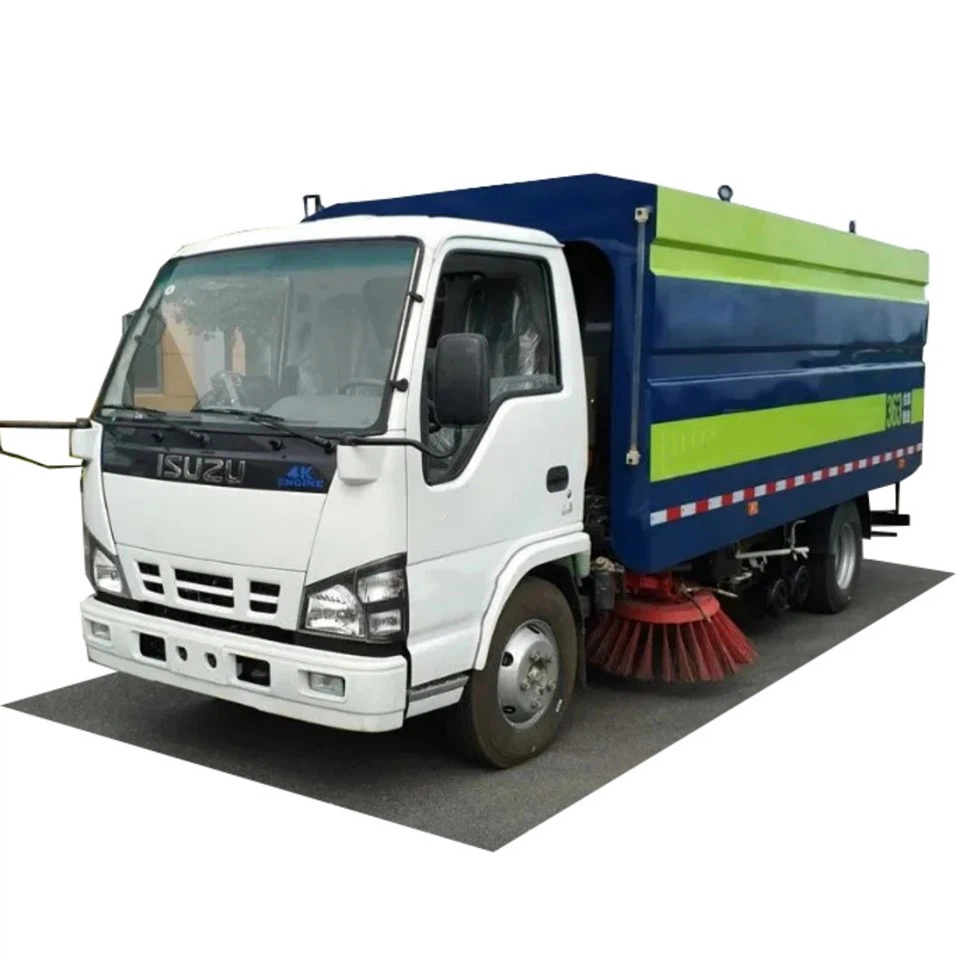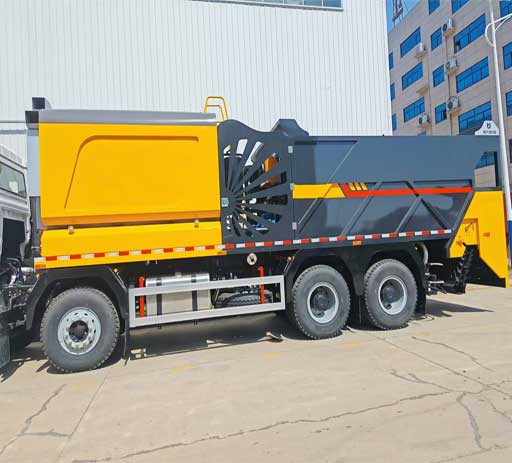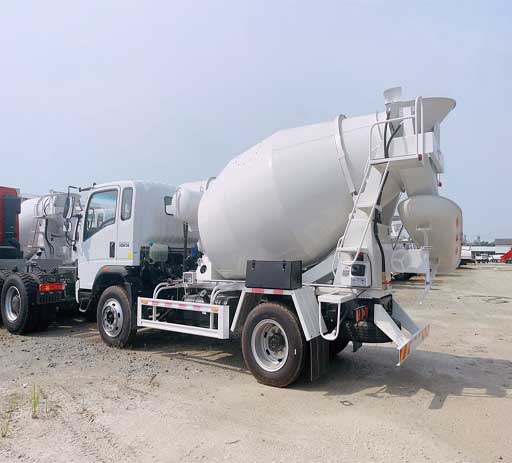Understanding the Gully Sucker: An Essential Waste Management Tool

When it comes to effective waste management, one tool that often doesn’t get the attention it deserves is the gully sucker. This powerful machine plays a critical role in maintaining the cleanliness of our surroundings and preventing environmental hazards. In this article, we will delve deeply into what a gully sucker is, how it operates, its benefits, practical applications, and much more. By the end, you’ll have a comprehensive understanding of this essential equipment.
What is a Gully Sucker?
A gully sucker is a specialized vacuum truck designed to remove waste and sludge from drainage systems, particularly from gullies and septic tanks. These machines are vital for preventing flooding and maintaining effective drainage in urban areas. They work by sucking up liquid waste and sludge, making them indispensable for maintaining sanitation in both residential and commercial settings.
How Does a Gully Sucker Work?
Mechanical Design
The design of a gully sucker consists of several essential components:
- Vacuum Tank: This is where the waste is stored after it is suctioned from the ground.
- Vacuum Pump: This powerful pump creates suction to draw in waste materials.
- Hose: A long, flexible hose is used for accessing hard-to-reach areas.
- Control System: Allows the operator to manage the suction power and unload the waste material.
Operational Process
The operation of a gully sucker typically involves the following steps:
- The operator positions the hose over the area to be cleaned.
- The vacuum pump is activated, creating a suction effect that draws in sludge, debris, and liquid waste.
- The waste is transported through the hose and into the vacuum tank.
- Once the tank is full, the operator travels to a designated disposal site to offload the waste.
The Benefits of Using a Gully Sucker
1. Prevents Flooding
One of the primary benefits of gully suckers is their role in preventing flooding. By efficiently removing waste and sludge from drainage systems, these machines promote better water flow and reduce the risk of blockage during heavy rains.
2. Improves Hygiene
Regular gully sucking contributes to improved public hygiene by eliminating stagnant water and debris that can become breeding grounds for pests and bacteria.
3. Saves Time and Labor
Using a gully sucker is far more efficient than manual cleaning methods. It requires less time and labor, making it a cost-effective solution for waste management.
4. Enhances Environmental Safety
By preventing waste buildup, gully suckers help maintain a cleaner environment, reducing the risk of water contamination and promoting public health.
Practical Applications of Gully Suckers
1. Urban Drainage Maintenance
Gully suckers are commonly used by municipalities to maintain stormwater drainage systems. They can clear silt, leaves, and other debris from drainage gullies, improving water flow and reducing flooding risk.
2. Septic Tank Services
Contractors use gully suckers to empty septic tanks, ensuring they function efficiently and do not overflow, which can lead to significant sanitation issues.
3. Industrial Cleaning
Many industries utilize gully suckers for the maintenance of their waste systems, ensuring compliance with environmental regulations and avoiding costly fines.
4. Emergency Response
Gully suckers can be deployed in emergencies, such as after flooding events, to quickly remove accumulated water and reduce damage.
How to Choose the Right Gully Sucker
Consider Purpose and Usage

Identify the main use of the gully sucker—whether for residential, commercial, or heavy industrial use—to select an appropriate model that meets your specific needs.
Evaluate Capacity
Different models come with varied tank capacities. Choose one that can handle the volume of waste you expect to encounter.

Check for Ease of Use
Look for machines that offer intuitive controls and ease of operation. This can reduce training time for operators and increase overall efficiency.
Assess Maintenance and Support
Choose a manufacturer or supplier that offers reliable maintenance support and readily available parts to minimize downtime.
Gully Sucker Maintenance Tips
1. Regular Inspections
Inspect the vacuum tank, hoses, and pump regularly to ensure they are in good working order and free from blockages.
2. Clean the Filters
Ensure filters are cleaned or replaced as necessary to maintain optimal suction power and avoid damage to the machine.
3. Monitor Fluid Levels
Regularly check fluid levels in the vacuum tank and hydraulics to prevent overheating and ensure efficient operation.

4. Follow Manufacturer Guidelines
Always adhere to the maintenance schedule and instructions provided by the manufacturer to prolong the life of the equipment.
Cost Factors for Gully Suckers
Initial Purchase vs. Rental
The cost of a gully sucker can vary significantly based on whether you choose to buy or rent. Consider your frequency of use to determine the most cost-effective option.
Operational Costs
Operational costs include fuel, maintenance, and labor. Evaluate these factors to understand the total cost of ownership.
Potential Revenue Generation
For businesses, offering gully sucking services can provide an additional revenue stream, as demand for waste management continues to grow.
Environmental Impact of Gully Suckers
1. Waste Disposal Compliance
Gully suckers must comply with local and national regulations regarding waste disposal, ensuring proper management of hazardous and non-hazardous waste materials.
2. Sustainable Practices
Using gully suckers can promote sustainable waste management practices by preventing pollution of waterways and promoting efficient waste removal methods.
3. Role in Recycling Initiatives
In some cases, gully suckers can help collect recyclable materials from waste streams, supporting overall recycling efforts.
FAQs About Gully Suckers
1. What types of waste can a gully sucker handle?
Gully suckers can handle a variety of waste types, including sewage, sludge, leaves, and other debris from drainage systems.
2. How often should drainage systems be cleaned with a gully sucker?
The frequency of cleaning depends on the volume of debris and waste. Regular inspections can help determine when cleaning is necessary, typically every few months in urban areas.
3. Can I rent a gully sucker instead of buying one?
Yes, many companies offer rental services for gully suckers, which can be a cost-effective solution for those who need the equipment only occasionally.
4. Are there any safety concerns associated with using a gully sucker?
Proper training is essential for operators to follow safety protocols, as incorrect use can lead to accidents or equipment damage.
5. What should I do if my gully sucker stops working?
If your gully sucker stops working, consult the manufacturer’s troubleshooting guide, check for blockages, and consider contacting a professional for repairs.
6. Are gully suckers environmentally friendly?
When used properly and in compliance with regulations, gully suckers contribute to environmental safety by preventing pollution and promoting hygiene.
